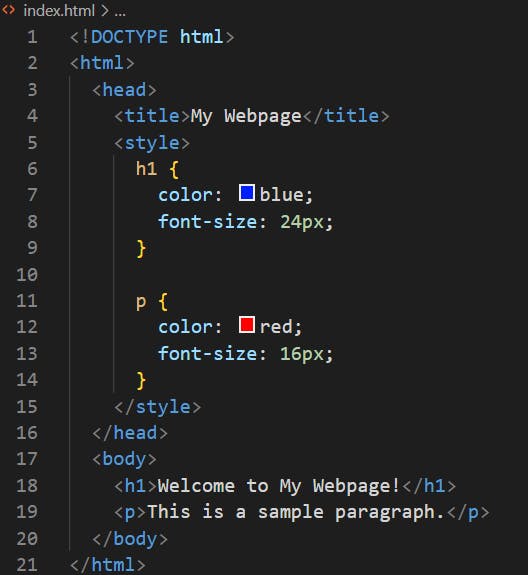What is CSS?
CSS stands for Cascading Style Sheets. It is a language used for describing the look and formatting of a document written in HTML (Hypertext Markup Language). In simple terms, CSS allows you to control the appearance of elements on a webpage.
Imagine you have a simple HTML document with a heading and a paragraph:

In this example, the CSS code is placed inside the <style> tags within the <head> section of the HTML document. It consists of rules that define how different HTML elements should be styled.
The CSS rules are applied to the HTML elements using selectors. In this case, we have two selectors: h1 and p, which target the heading and paragraph elements respectively.
Within each selector, we specify different properties and their corresponding values. For the h1 selector, we set the color property to "blue" and the font-size property to "24px". Similarly, for the p selector, we set the color property to "red" and the font-size property to "16px".
When the webpage is loaded in a browser, the CSS styles will be applied to the corresponding HTML elements. The heading will appear in blue with a font size of 24 pixels, while the paragraph will be red with a font size of 16 pixels.

CSS allows you to control various aspects of an element's appearance, such as colors, fonts, margins, padding, borders, and more. By using CSS, you can make your webpages visually appealing and well-designed.
Conclusion
CSS (Cascading Style Sheets) is a language used for styling the appearance of webpages. It controls the colors, fonts, layout, and other visual aspects of HTML elements, making it possible to create attractive and consistent designs for websites.
I hope you enjoyed reading this.
